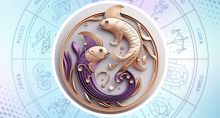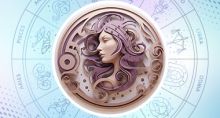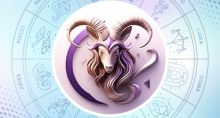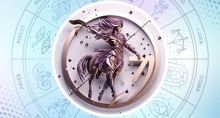Goddess Narasimhi
Who is Goddess Narasimhi?
Goddess Narasimhi is one of the 7 Sapta Matrikas or Mother Goddesses of Hinduism. They come from the Shakti or the power of 7 different gods. Two of them are from the family of Lord Shiva, three from the various avatars of Lord Vishnu, and one each from Lord Brahma and Lord Indra. They have the traits and characteristics of their male counterparts.
The Sapta Matrikas
The Sapta Matrikas Brahmani (shakti of Brahma), Vaishnavi (shakti of Vishnu), Maheshvari (shakti of Shiva), Indrani (shakti of Indra), Kaumari (shakti of Kumara or Kartikeya), Varahi (shakti of Varaha avatar of Vishnu) and Chamunda or Narasimhi (shakti of Narashimha avatar of Vishnu). They carry the same weapons, wear the same ornaments and ride the same mounts or vahanas and also carry the same banners as the corresponding male Gods. There are representations of them in shrines throughout India, often flanked by Virabhadra (a ferocious form of Shiva) on the left and Ganesha on the right.
Puranic myths state that the matrikas are goddesses of the battlefield. According to legend Shiva and Vishnu tried to kill the asura named Andhaka and failed. So they created the Sapta matrikas to kill him. Andhakasura had a boon by which each drop of blood from his body that fell on the ground would give rise to another asura. But the seven goddesses drank up the blood, so it did not fall on the ground. This enabled Shiva to kill the asura.
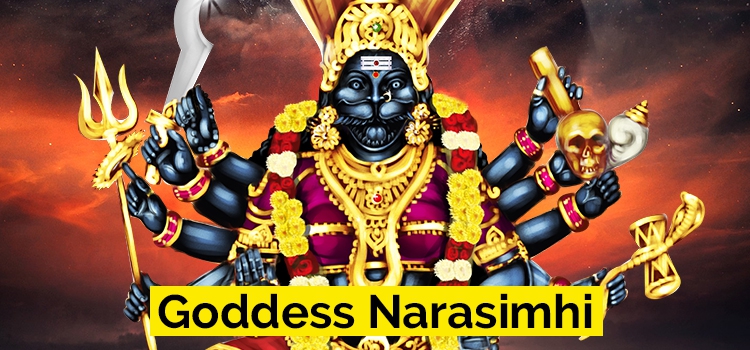
9 Fire Labs To Activate 9 Life-Transforming Goddesses
The Vamana Purana has another version regarding the birth of the Sapta Matrikas. There was a fierce war between the Devas and the Asuras. When Chanda and Munda, two asuras, were killed, another asura named Raktabija came to the battlefield with an entire army. Seeing the large army, the goddesses, Kausiki and Kali, made a loud sound. From their mouth emerged Maheswari and Brahmani. They were seated on a swan, wore a rosary, and had a water pot in their hands. From Maheshwari’s lion emerged Kaumari, seated on a peacock and carrying a lance. Vaishnavi emerged from Kaumari's hand, seated on Garuda and holding a conch, discus, club, sword, bow, and arrow. Varahi came out of her posterior, and she was seated on the Seshnaga (serpent), and from her heart emerged Narasimhii with fierce claws. Chamunda came out from her foot. The Varaha-Purana, however, claims that there are 8 mother goddesses or Ashta Matrikas, including the goddess Yogeswari.
Depiction of Goddess Narasimhi
Goddess Narasimhi is the Shakti or power of Lord Narasimha, the half-lion, half-man avatar of Lord Vishnu. The goddess is also popularly worshipped under the name Pratyangira Devi. She has a lioness’s face and a human body. Her other names are Atharvana Bhadrakali and Narashimhika (in Kalisahasranama Stotram).
The goddess has four hands that hold a Trishula (trident), Shankhu (conch shell), Chakra (discus), and Gada (mace). However, some scriptures say that Narasimhi has 2,000 hands, multiple weapons, and a thousand tongues.
In Devi Mahatmya, Narasimhi takes part with Devi in the fight against the demons, Shumbha and Nishumba. She is a fearsome warrior. When she arrived on the battlefield, the stars fell into disarray, and she brought down the constellations by a toss of her mane. She filled all the quarters and the sky with her thunderous roars and strode about on the battlefield, devouring the great demons or asuras she had torn using her claws. Thus goes the description of her exploits on the battlefield.
She was created to control the plague of demons who were created by Andhakasura. When Andhakasura tried to kidnap Uma (Goddess Parvati), he was attacked by Maharudra, who shot several arrows at him from his mahapinaka. When the arrows pierced the demon’s body, some drops of blood fell on earth, and thousands of Andhakas arose from those drops. This was how the plague of demons was created. To control it, Maharudra created the Matṛika-Śhaktis (viz., Narasimhi) and told them to drink the demons’ blood.
Vaishnavite and Shaivite Origins of Goddess Narasimhi
Two schools of thought are prevalent, regarding the origin of Goddess Narasimhi.
One is the Vaishnava school of thought which says that Goddess Narasimhi appeared from Goddess Lakshmi to control Narasimha whose fury, after killing the demon, Hiranyakashipu, was about to engulf the universe.
On the other hand, the Shaivite school of thought suggests that Goddess Narasimhi is an incarnation of Goddess Shakti, and she emerged from the wings of Sharabha – the form Shiva assumed to cool down the anger of Narasimha.
Temples for Goddess Narasimhi
There is an ancient temple for Goddess Narasimhi at a place called Aivar Padi near Kumbakonam in Tamil Nadu. Here the deity has the name Pratyangira Devi and has 18 hands. There is another famous temple that is dedicated to Goddess Narasimhi. It is the Brahmapuram Sree Mahalakshmi Pratyangira Temple located in Sasthamangalam, Thiruvananthapuram, Kerala
In the Devi Mahatmya, sometimes, Narasimhi is mentioned in lieu of Chamunda (the seventh Matrika). There is a tradition of Ashtamatrikas that is prevalent in Nepal, where the eighth Matrika is Maha Lakshmi (who is different from Vaishnavi). Narasimhi is not included in the lists of Devi Purana and in Nepal. Other names for her are Narasimhini or Narasimhika. Narasimhi supposedly emerged from the heart of the Devi. As a Matrika, Narasimhi is considered to be an independent deity; and not a mere female version of Narasimha.










